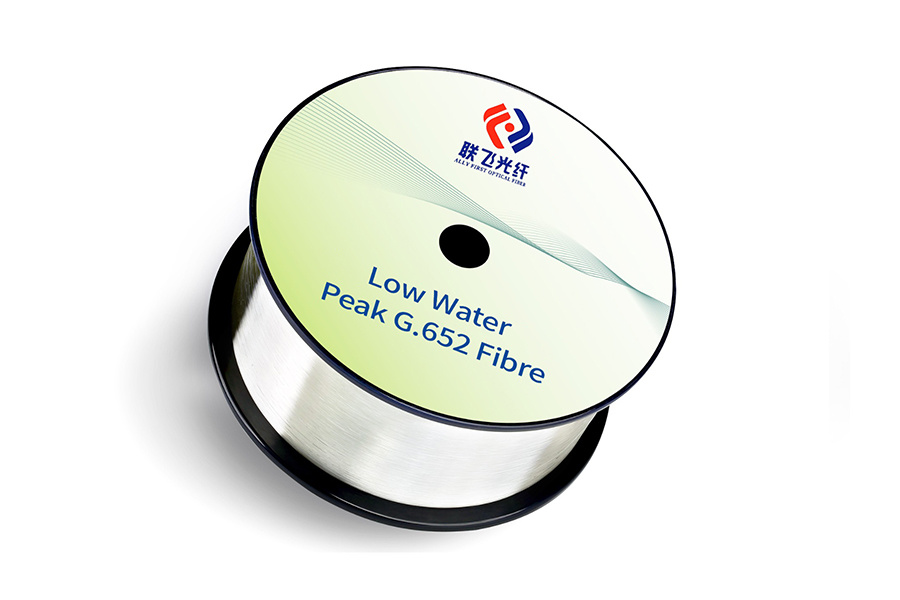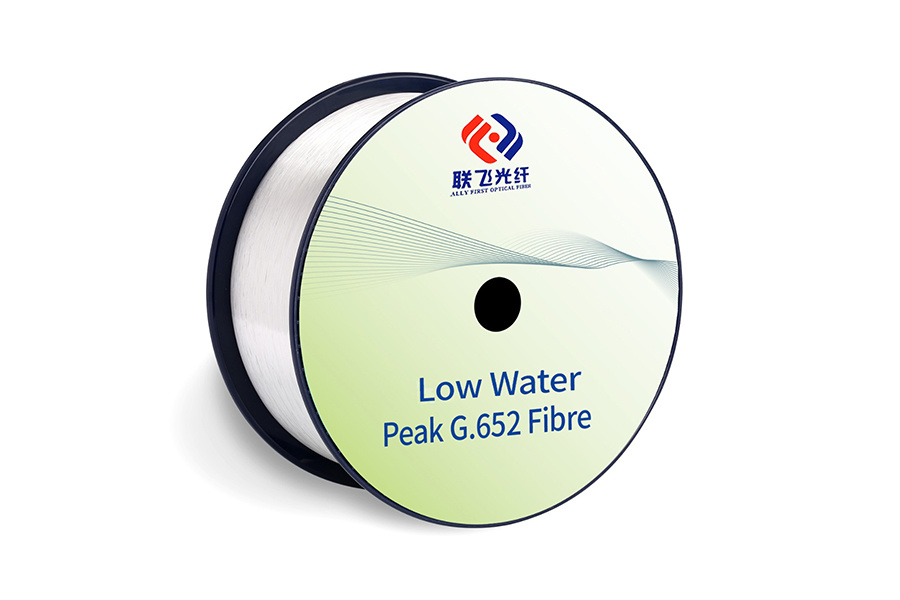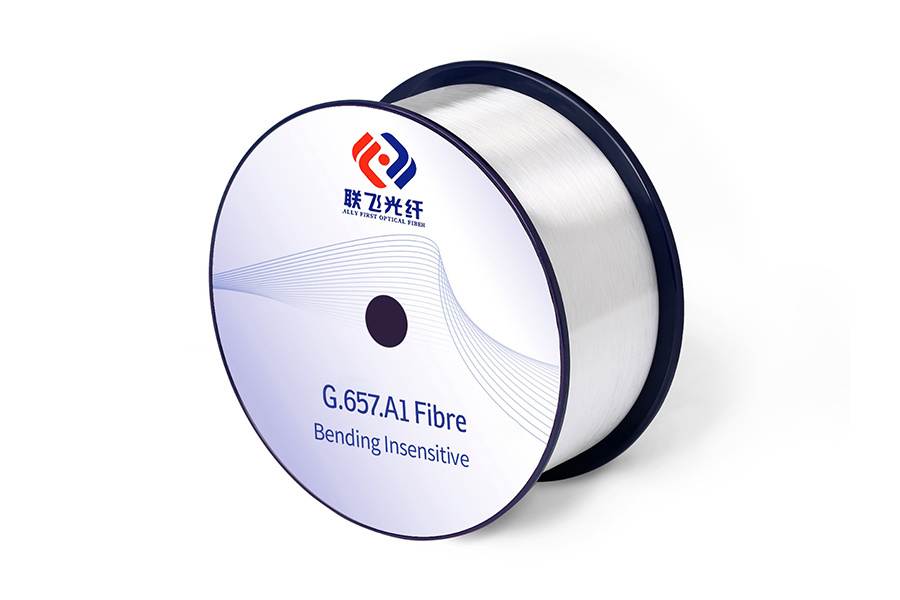Products
Low Water Peak Single-mode Fiber
YOFC FullBand® low water peak dispersion unshifted Single-mode fibre is designed specially for optical transmission systems operating over the entire wavelength window from 1260 nm to 1625 nm. By suppressing the water peak that occurs near 1383 nm in conventional single mode fibre due to hydroxyl (OH-) ions absorption, FullBand® fibre is able to open E-band (1360-1460nm) for operation, and consequently provides 100 nm more usable wavelengths.
- Applications
-
• With wide spectral bandwidth and superior optical characteristics, optical fiber is the best choice to support different transmission technologies such as Ethernet, Internet Protocol (IP), Asynchronous Transfer Mode (ATM), Synchronous Optical Network (SONET) and Wavelength Division Multiplexing (WDM). Fiber optic provides greater bandwidth resources for backbone networks, metropolitan area networks, and access networks, meeting the bandwidth resource requirements of various services such as voice, digital, and image transmission.
• Fiber optic cables are suitable for various types of fiber optic cable structures, including fiber optic ribbon cables, loose sleeve twisted fiber optic cables, skeleton fiber optic cables, central bundle tube fiber optic cables, and tight sleeve fiber optic cables.
- Product standards
-
Low water peak single-mode fiber meets or exceeds the technical specifications of ITU-T G.652. D and IEC 60793-2-50 B1.3 fiber.
Zhejiang Ally First Optical Fiber and Cable Co., Ltd. has established stricter standards for various indicators of optical fiber products.
- Characteristics
-
- Excellent bending resistance within a bending radius range of 7.5-15mm
- Fully compatible with G.652 single-mode fiber
- Low attenuation, meeting the requirements of O-E-S-C-L working band
- Low Polarization Mode Dispersion (PMD) to meet the needs of high-speed, long-distance transmission
- Used in various optical cables, including ribbon cables, with extremely low additional bending losses
- Accurate geometric parameters ensure low fusion loss and high fusion efficiency
- Having high fatigue resistance parameters to ensure service life under small bending radii
Specifications
|
Characteristics |
Conditions | Specified values | Units | |
|---|---|---|---|---|
|
Optical Characteristics |
||||
|
Attenuation |
1310nm |
≤0.34 |
[dB/km] |
|
|
1383nm(after H2-aging) |
≤0.34 |
[dB/km] |
||
|
1550nm |
≤0.20 |
[dB/km] |
||
|
1625nm |
≤0.24 |
[dB/km] |
||
|
Attenuation vs. Wavelength Max. α difference |
1285-1330nm, in reference to1310nm |
≤0.03 |
[dB/km] |
|
|
1525-1575nm, in reference to1550nm |
≤0.02 |
[dB/km] |
||
|
Dispersion Coefficient |
1285-1340nm |
-3.5to3.5 |
[ps/(nm·km)] |
|
|
1550nm |
≤18 |
[ps/(nm·km)] |
||
|
1625nm |
≤22 |
[ps/(nm·km)] |
||
|
Zero Dispersion Wavelength(λ0) |
-- |
1300~1324 |
[nm] |
|
|
Zero Dispersion Slope(S0) |
-- |
≤0.092 |
[ps/(nm2·km)] |
|
|
Typical Value |
-- |
0.086 |
[ps/(nm2·km] |
|
|
PMD |
Maximum Individual Fibre |
-- |
≤0.1 |
[ps/√km] |
| Link Design Value(M=20,Q=0.01%) |
-- |
≤0.06 |
[ps/√km] |
|
| Typical Value |
-- |
0.04 |
[ps/√km] |
|
|
Cable Cutoff Wavelength ( λcc) |
-- |
≤1260 |
[nm] |
|
|
Mode Field Diameter(MFD) |
1310nm |
8.7~9.5 |
[μm] |
|
|
1550nm |
9.8~10.8 |
[μm] |
||
|
Effective Group Index of Refraction(Neff) |
1310nm |
1.466 |
-- |
|
|
1550nm |
1.467 |
-- |
||
|
Point Discontinuities |
1310nm |
≤0.05 |
[dB] |
|
|
1550nm |
≤0.05 |
[dB] |
||
|
Geometrical Characteristics |
||||
|
Cladding Diameter |
-- |
125.0±0.7 |
[μm] |
|
|
Cladding Non-Circularity |
-- |
≤1.0 |
[%] |
|
|
Coating Diameter |
-- |
235~250 |
[μm] |
|
|
Coating-Cladding Concentricity Error |
-- |
≤12.0 |
[μm] |
|
|
Coating Non-Circularity |
-- |
≤6.0 |
[%] |
|
|
Core-Cladding Concentricity Error |
-- |
≤0.6 |
[μm] |
|
|
Curl(radius) |
-- |
≥4 |
[m] |
|
|
Delivery Length |
-- |
Up to50.4 |
[km/reel] |
|
|
Environmental Characteristics |
1310nm, 1550nm & 1625nm | |||
|
Temperature Dependence Induced Attenuation |
-60℃ to +85℃ |
≤0.05 |
[dB/km] |
|
|
Temperature-Humidity Cycling Induced Attenuation |
-10°C to +85°C, 98% RH |
≤0.05 |
[dB/km] |
|
|
Water Immersion Dependence Induced Attenuation |
23°C,for 30 days |
≤0.05 |
[dB/km] |
|
|
Damp Heat Dependence Induced Attenuation |
85°C and 85% RH,for 30 days |
≤0.05 |
[dB/km] |
|
|
Dry Heat Aging |
85℃, for 30 days |
≤0.05 |
[dB/km] |
|
|
Mechanical Specifications |
||||
|
Proof Test |
-- |
≥9.0 |
[N] |
|
|
-- |
≥1.0 |
[%] |
||
|
-- |
≥100 |
[kpsi] |
||
|
Macro-bend Induced Attenuation |
100 Turns Around a Mandrel of 30 mm Radius |
1625nm |
≤0.05 |
[dB] |
|
100 Turns Around a Mandrel of 25 mm Radius |
1310nm and1550nm |
≤0.05 |
[dB] |
|
|
1 Turn Around a Mandrel of 16 mm Radius |
1550nm |
≤0.05 |
[dB] |
|
|
Coating Strip Force |
typical average force |
1.5 |
[N] |
|
|
peak force |
1.3~8.9 |
[N] |
||
|
Dynamic Fatigue Parameter(nd) |
-- |
≥20 |
-- |
|
- 产品描述
- 规格参数
-
- Commodity name: Low Water Peak Single-mode Fiber
YOFC FullBand® low water peak dispersion unshifted Single-mode fibre is designed specially for optical transmission systems operating over the entire wavelength window from 1260 nm to 1625 nm. By suppressing the water peak that occurs near 1383 nm in conventional single mode fibre due to hydroxyl (OH-) ions absorption, FullBand® fibre is able to open E-band (1360-1460nm) for operation, and consequently provides 100 nm more usable wavelengths.
- Applications
-
• With wide spectral bandwidth and superior optical characteristics, optical fiber is the best choice to support different transmission technologies such as Ethernet, Internet Protocol (IP), Asynchronous Transfer Mode (ATM), Synchronous Optical Network (SONET) and Wavelength Division Multiplexing (WDM). Fiber optic provides greater bandwidth resources for backbone networks, metropolitan area networks, and access networks, meeting the bandwidth resource requirements of various services such as voice, digital, and image transmission.
• Fiber optic cables are suitable for various types of fiber optic cable structures, including fiber optic ribbon cables, loose sleeve twisted fiber optic cables, skeleton fiber optic cables, central bundle tube fiber optic cables, and tight sleeve fiber optic cables.
- Product standards
-
Low water peak single-mode fiber meets or exceeds the technical specifications of ITU-T G.652. D and IEC 60793-2-50 B1.3 fiber.
Zhejiang Ally First Optical Fiber and Cable Co., Ltd. has established stricter standards for various indicators of optical fiber products.
- Characteristics
-
- Excellent bending resistance within a bending radius range of 7.5-15mm
- Fully compatible with G.652 single-mode fiber
- Low attenuation, meeting the requirements of O-E-S-C-L working band
- Low Polarization Mode Dispersion (PMD) to meet the needs of high-speed, long-distance transmission
- Used in various optical cables, including ribbon cables, with extremely low additional bending losses
- Accurate geometric parameters ensure low fusion loss and high fusion efficiency
- Having high fatigue resistance parameters to ensure service life under small bending radii
-
Specifications
Characteristics
Conditions Specified values Units Optical Characteristics
Attenuation
1310nm
≤0.34
[dB/km]
1383nm(after H2-aging)
≤0.34
[dB/km]
1550nm
≤0.20
[dB/km]
1625nm
≤0.24
[dB/km]
Attenuation vs. Wavelength
Max. α difference
1285-1330nm, in reference to1310nm
≤0.03
[dB/km]
1525-1575nm, in reference to1550nm
≤0.02
[dB/km]
Dispersion Coefficient
1285-1340nm
-3.5to3.5
[ps/(nm·km)]
1550nm
≤18
[ps/(nm·km)]
1625nm
≤22
[ps/(nm·km)]
Zero Dispersion Wavelength(λ0)
--
1300~1324 [nm]
Zero Dispersion Slope(S0)
--
≤0.092
[ps/(nm2·km)]
Typical Value
--
0.086
[ps/(nm2·km]
PMD
Maximum Individual Fibre --
≤0.1
[ps/√km]
Link Design Value(M=20,Q=0.01%) --
≤0.06
[ps/√km]
Typical Value --
0.04
[ps/√km]
Cable Cutoff Wavelength ( λcc)
--
≤1260
[nm]
Mode Field Diameter(MFD)
1310nm
8.7~9.5
[μm]
1550nm
9.8~10.8
[μm]
Effective Group Index of Refraction(Neff)
1310nm
1.466
--
1550nm
1.467
--
Point Discontinuities
1310nm
≤0.05
[dB]
1550nm
≤0.05
[dB]
Geometrical Characteristics
Cladding Diameter
--
125.0±0.7
[μm]
Cladding Non-Circularity
--
≤1.0
[%]
Coating Diameter
--
235~250 [μm]
Coating-Cladding Concentricity Error
--
≤12.0
[μm]
Coating Non-Circularity
--
≤6.0
[%]
Core-Cladding Concentricity Error
--
≤0.6
[μm]
Curl(radius)
--
≥4
[m]
Delivery Length
--
Up to50.4
[km/reel]
Environmental Characteristics
1310nm, 1550nm & 1625nm Temperature Dependence Induced Attenuation
-60℃ to +85℃
≤0.05
[dB/km]
Temperature-Humidity Cycling Induced Attenuation
-10°C to +85°C, 98% RH
≤0.05
[dB/km]
Water Immersion Dependence Induced Attenuation
23°C,for 30 days
≤0.05
[dB/km]
Damp Heat Dependence Induced Attenuation
85°C and 85% RH,for 30 days
≤0.05
[dB/km]
Dry Heat Aging
85℃, for 30 days
≤0.05
[dB/km]
Mechanical Specifications
Proof Test
--
≥9.0
[N]
--
≥1.0
[%]
--
≥100
[kpsi]
Macro-bend Induced Attenuation
100 Turns Around a Mandrel of 30 mm Radius
1625nm
≤0.05
[dB]
100 Turns Around a Mandrel of 25 mm Radius
1310nm and1550nm
≤0.05
[dB]
1 Turn Around a Mandrel of 16 mm Radius
1550nm
≤0.05
[dB]
Coating Strip Force
typical average force
1.5
[N]
peak force
1.3~8.9
[N]
Dynamic Fatigue Parameter(nd)
--
≥20
--
Product Color Pages
Related Products








